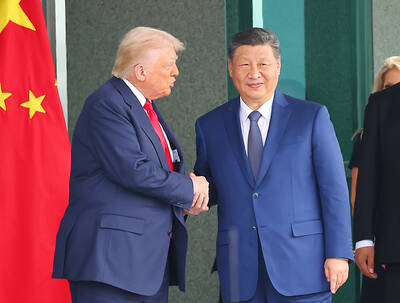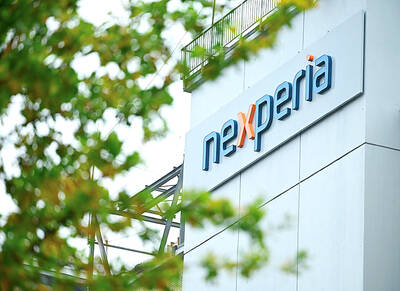The board of China Life Insurance Co (中國人壽) yesterday approved a proposal to raise NT$3.93 billion (US$121.1 million) via an issuance of 200 million new shares at around NT$19.65 apiece, the company said.
The new capital will be used to fund expansion, said a public relations official who declined to be named.
Pending a regulatory approval from the Financial Supervisory Commission, China Life was expected to complete the capital injection “by the end of this year,” she said, adding that the final share price was subject to market conditions at the time of sales.
The capital injection, however, has nothing to do with boosting China Life’s risk-based capital (RBC) level, which has reached 300 percent, far above the statutory 200 percent level, she said.
“Our life insurer has been outperforming its peers and profit-making for the past year,” she said.
Seventy-five percent of the 200 million new shares will be acquired by the life insurer’s stakeholders, including True Prospect Ltd with a 10 percent stake, KGI Securities Co (凱基證券) with a 7.8 percent stake and another investment fund with a 5 percent stake, the company said in a filing to the Taiwan Stock Exchange.
Another 15 percent, or 30 million shares, will be reserved for employees, while the remaining 10 percent, or 20 million shares, is scheduled to be sold to the public, the filing said.

RUN IT BACK: A succesful first project working with hyperscalers to design chips encouraged MediaTek to start a second project, aiming to hit stride in 2028 MediaTek Inc (聯發科), the world’s biggest smartphone chip supplier, yesterday said it is engaging a second hyperscaler to help design artificial intelligence (AI) accelerators used in data centers following a similar project expected to generate revenue streams soon. The first AI accelerator project is to bring in US$1 billion revenue next year and several billion US dollars more in 2027, MediaTek chief executive officer Rick Tsai (蔡力行) told a virtual investor conference yesterday. The second AI accelerator project is expected to contribute to revenue beginning in 2028, Tsai said. MediaTek yesterday raised its revenue forecast for the global AI accelerator used

TEMPORARY TRUCE: China has made concessions to ease rare earth trade controls, among others, while Washington holds fire on a 100% tariff on all Chinese goods China is effectively suspending implementation of additional export controls on rare earth metals and terminating investigations targeting US companies in the semiconductor supply chain, the White House announced. The White House on Saturday issued a fact sheet outlining some details of the trade pact agreed to earlier in the week by US President Donald Trump and Chinese President Xi Jinping (習近平) that aimed to ease tensions between the world’s two largest economies. Under the deal, China is to issue general licenses valid for exports of rare earths, gallium, germanium, antimony and graphite “for the benefit of US end users and their suppliers

Dutch chipmaker Nexperia BV’s China unit yesterday said that it had established sufficient inventories of finished goods and works-in-progress, and that its supply chain remained secure and stable after its parent halted wafer supplies. The Dutch company suspended supplies of wafers to its Chinese assembly plant a week ago, calling it “a direct consequence of the local management’s recent failure to comply with the agreed contractual payment terms,” Reuters reported on Friday last week. Its China unit called Nexperia’s suspension “unilateral” and “extremely irresponsible,” adding that the Dutch parent’s claim about contractual payment was “misleading and highly deceptive,” according to a statement

Artificial intelligence (AI) giant Nvidia Corp’s most advanced chips would be reserved for US companies and kept out of China and other countries, US President Donald Trump said. During an interview that aired on Sunday on CBS’ 60 Minutes program and in comments to reporters aboard Air Force One, Trump said only US customers should have access to the top-end Blackwell chips offered by Nvidia, the world’s most valuable company by market capitalization. “The most advanced, we will not let anybody have them other than the United States,” he told CBS, echoing remarks made earlier to reporters as he returned to Washington